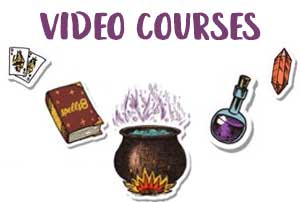For ancient alchemists, the Spirit or Aether was the fifth essence or the fifth element of creation.
According to Aristotle, Aether is a divine and indestructible substance. Its natural habitat is the Universe, where stars and other celestial bodies are created. Aether is understood as the soul of our reality and all life emanates from it.
Working with the Spirit Element
In ritual, pagans and Wiccans call forth the Spirit either through their own self or by invoking a Goddess or God. The Spirit is thought to reside within us as part of our core being. While it dwells within us, it is not something tangible.
Most of the time we are not even aware of the spirit residing inside of us as we go about our daily life. But it is there, and when needed, we can call it forth. Focusing our energy and attention upon the spirit draws it from our depths, brings it to the forefront, and allows us to connect with it to manifest change.
Video: Spirit or Aether Invocation
Invoke Spirit with a chant and meditate to the relaxing sound of flutes to connect with the qualities of this primary Elemental, also known as Akasha or Æther.

Light a white candle during this meditation.
The Spirit attracts and favors magical thinking and everything related to spirituality and mysticism.
It is said to be found in the hollow spaces of the human body, including the center of the spinal column, veins, arteries, nerves, internal organs and different body cavities. In fact it is everywhere, and because it is part of everything, it does not have specific correspondences such as a cardinal direction or gender.
Audio-Only Meditation
Print it! 📄
Members of Spells8 can download this invocation. This PDF version comes with a transparent background so you can print it on any kind of paper you want and add it to your own Book of Shadows. Find more printable grimoire pages.
Spirit Elemental: The Fifth Element
The concept of elements originated in Ancient Greece as it was a topic debated and examined by Aristotle and Plato. Originally, these ancient philosophers developed four elements that covered all physical substances found on earth.
But even though this classical set of elements seemed perfect, Aristotle felt something was missing. Maybe it was his own religious upbringing or the overarching ideas of a polytheistic society, but he believed that there was something more, something difficult to name, and something no one could quite put their finger on. This mysterious fifth element was called Aether.
Aether and the Alchemy of Life
To the ancient Greeks, Aether was the air above the earth. It existed in the celestial sphere where the goddesses and gods lived on Mount Olympus. Plato described this air as translucent, and while it was originally connected to the element of air, it became clear the energy vibrating in this space should be its own element.
Medieval scientists and alchemists picked up the idea of Aether and called it quintessence from the Latin name for “fifth essence”. To them, this element was the material that filled the space above the earth’s atmosphere. It encompasses the universe and was thought to make up the heavenly bodies.
The quintessence was often used in several theories to explain a variety of natural phenomenon such as gravity and the traveling of light. But even though it helped to explain natural phenomenon, it was estimated to be little of it on Earth.
When the medicinal alchemists began to use an elemental system, they sought to isolate quintessence. They believed that if the fifth element could be separated from the others and incorporated into elixirs and medicine so that it could heal the body of any impurities or illnesses. The fact it came from the heavens gave it a purity beyond measure and an ability to restore health and vitality.
Read also: Elemental Spirits & the Four Directions of Magic
Akasha, Goddess or Element?
In ancient India, the term akasha arose to describe this fifth element. While its name has been used in popular culture and works of fiction to represent a Mother Goddess, the word akasha simply means “space” or “aether” in Sanskrit. It is derived from a root kāś meaning “to be”.
Traditional translations of akasha speak of the sky or atmosphere, while more detailed interpretations in Vedic Sanskrit have it refer to the open space, or vacuity. Over time in Vedantic philosophy, akasha came to be an ethereal fluid that was imagined pervading all of the cosmos.
Four of the Five Elements – air, earth, fire, and water – are physical and make up the entire earth, while the aether is different. This makes the fifth element much more difficult to articulate regardless of your culture. Each culture has attempted to define aether by giving it a name: spirit, akasha, aether, quintessence.
The spirit element has no form, rather it is an energy. This energy is present in all material and non-material objects, but it cannot take its own physical form.
The mystery of akasha is still pondered today by philosophers, religious practitioners, and scientists. In fact, some modern-day physicists decided to reintroduce the concept of the fifth element to explain some of the deficiencies in our current physical models. The term quintessence has been revived and applied to dark matter as a way to explain the acceleration of the universe. And in this process, it takes on a new name, the fifth fundamental force.
Akasha and Wicca
In 1995, Scott Cunningham used the aether to describe the element of spirit and proposed that all of the other elements descended from it. He was not alone, as many pagans interpret the fifth element of akasha to be a combination of earth, air, fire, and water. Without akasha, they believe there would be nothing else, no earth, no spirit, no Magick.
Using these five elements, pagan practitioners work to direct their will to make changes. These changes may be for the earth herself or for the individual practitioner. In either case, akasha is harnessed in order to alter the current path of reality. Through akasha, practitioners are able to balance their mental and physical health using meditation, ritual, and mindfulness.
Spirit Elemental Powers and Correspondences
For many Western occult practitioners, the elements are hierarchical. At the top is spirit, then comes Fire, Air, Water, and Earth. The elements on top are linked to the spirit realm and perfection while those on the bottom are mundane and material. However, Wiccans do not place the elements in order, rather they view each element as equal with the others.
For Wiccans, the top of the pentacle represents the Spirit. It is unlike the other four Elements because it is part of everything in the universe therefore spirit does not have any specific ritual or magical correspondences. The lack of physicality of the spirit places it in a different type of category. There are no planets, tools, or symbols like there are for earth, air, fire, and water.
The only exception is that akasha is often represented as white. Whether this derives from the chakra color charts or the glow of halos or the combination of all light, akasha represents the all. It has no gender, no season, no direction; it simply ‘is’. It is often visually portrayed as a swirl or spiral or circle as the movement of energy is infinitesimal and never ending.
As humans have tried for thousands of years to define and isolate akasha, it remains elusive despite all of our modern day technology. While it can be difficult to pinpoint, we are able to use its powers in ritual and meditation when the mind becomes quiet and focused.
Sign in to Spells8 and become part of a new and exciting experience
Discover your Wiccan path











